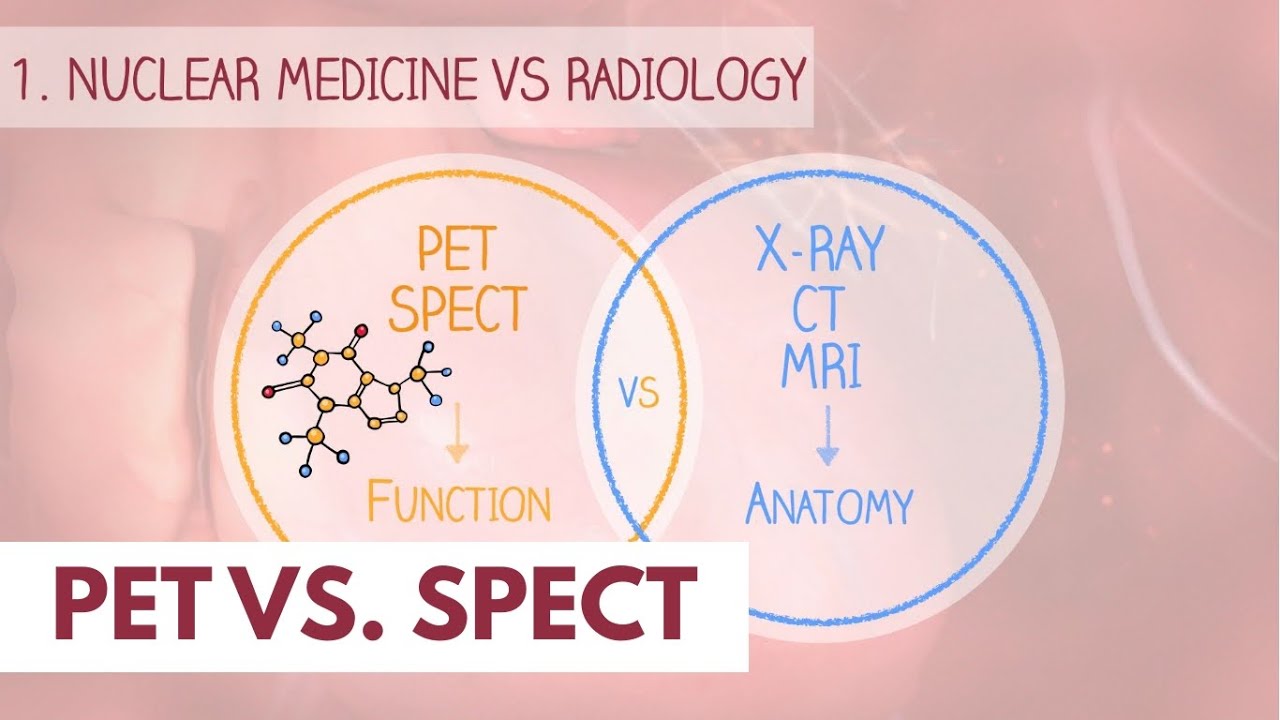#BIMBELRADIOGRAFER EPS. 111 | EXPLANATION OF FR MRI AND NUCLEAR MEDICINE QUESTIONS FOR EXPERT D4 ...
Summary
TLDRThe transcript discusses various aspects of radiopharmaceuticals and nuclear medicine, focusing on imaging techniques like PET and MRI. It covers the use of radiopharmaceuticals like TC99, sulfur colloid, and IDA in hepatobiliary imaging and how they are employed for diagnosis. The conversation also dives into MRI parameters like TR and TE settings for obtaining optimal T1-weighted images, essential for visualizing anatomical structures. The discussion reflects on exam preparation, addressing common misconceptions and clarifying technical details to ensure accurate interpretation and decision-making during medical assessments.
Takeaways
- 😀 The main focus of the discussion is about the selection of radiopharmaceuticals used in hepatobiliary examinations and related medical procedures.
- 😀 Radiopharmaceutical options include sulfur colloid, pet, and TC99m, with a particular emphasis on their use in hepatobiliary scans.
- 😀 A common misunderstanding among CPNS candidates was the assumption that HIDA is the only radiopharmaceutical used for hepatobiliary scans, but there are other alternatives.
- 😀 The role of radiopharmaceuticals in diagnostic procedures is important, and their use depends on factors like their ability to visualize specific anatomical structures.
- 😀 The question of using FDG (F18) for PET scans is discussed, with the majority agreeing that FDG is the correct answer for PET imaging.
- 😀 The distinction between iodine isotopes like I-131 and I-123 is explained, with their use for thyroid cancer therapy and diagnostic purposes.
- 😀 Talium-2011 is specifically used for heart scans, an essential point when discussing radiopharmaceutical options for nuclear medicine.
- 😀 Xenon is used for lung imaging, underlining the variety of radiopharmaceuticals available for different types of diagnostic tests.
- 😀 The procedure for administering certain radiopharmaceuticals involves using food or drink as a medium to deliver the substances orally for effective scanning.
- 😀 A significant portion of the discussion focuses on MRI imaging, specifically the adjustment of parameters such as TR and TE for optimal T1-weighted imaging to enhance anatomical clarity.
Q & A
What was the main confusion among the participants regarding hepatobiliary scans in the script?
-The main confusion was regarding the available options for hepatobiliary scans, specifically whether HIDA was an option. The participants expected HIDA but were informed that it was not available, and other options like sulfur colloid and petithin were discussed as alternatives.
What radionuclide is commonly used for PET imaging, as mentioned in the script?
-F18 FDG (Fluorodeoxyglucose) is the most commonly used radionuclide for PET imaging, as mentioned in the script.
What is the primary use of iodine isotopes such as I-131 and I-123 according to the script?
-Iodine isotopes like I-131 and I-123 are primarily used for thyroid therapy, particularly for ablating thyroid tissue after thyroidectomy or for treating thyroid cancer.
Why is Talium-201 used in medical imaging, as stated in the script?
-Talium-201 is used for imaging the heart, specifically for detecting myocardial perfusion during stress tests or heart imaging procedures.
What is the role of xenon in medical imaging?
-Xenon is used for imaging the lungs, especially for ventilation scans and pulmonary imaging in medical diagnostics.
What is the purpose of adjusting TR (repetition time) and TE (echo time) in MRI, based on the script?
-Adjusting TR and TE in MRI is essential for optimizing the contrast and clarity of T1-weighted images, which help in visualizing anatomical structures more clearly.
What is the key difference between T1 and T2-weighted MRI images, according to the script?
-T1-weighted images are primarily used to visualize anatomical structures and tissues, while T2-weighted images are better suited for detecting pathological changes such as inflammation or tumors.
What can adjusting TR and TE in MRI potentially improve, as discussed in the transcript?
-Adjusting TR and TE in MRI can improve the Signal-to-Noise Ratio (SNR), speed up scanning time, and enhance the contrast of anatomical structures, thus making the images clearer and more useful for diagnosis.
Why did the author emphasize the importance of being aware of multiple options during an exam?
-The author emphasized the importance of being aware of multiple options during an exam to prevent confusion, especially when unexpected choices are presented, such as the non-availability of HIDA in the hepatobiliary scan exam.
What was the correct answer for the PET radionuclide question in the exam, based on the transcript?
-The correct answer for the PET radionuclide question was F18 FDG (Fluorodeoxyglucose), as most participants answered A correctly.
Outlines

Cette section est réservée aux utilisateurs payants. Améliorez votre compte pour accéder à cette section.
Améliorer maintenantMindmap

Cette section est réservée aux utilisateurs payants. Améliorez votre compte pour accéder à cette section.
Améliorer maintenantKeywords

Cette section est réservée aux utilisateurs payants. Améliorez votre compte pour accéder à cette section.
Améliorer maintenantHighlights

Cette section est réservée aux utilisateurs payants. Améliorez votre compte pour accéder à cette section.
Améliorer maintenantTranscripts

Cette section est réservée aux utilisateurs payants. Améliorez votre compte pour accéder à cette section.
Améliorer maintenant5.0 / 5 (0 votes)






